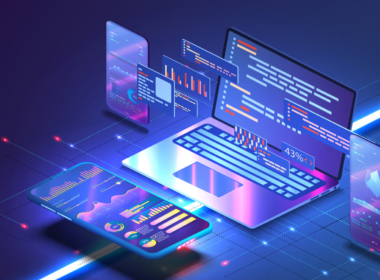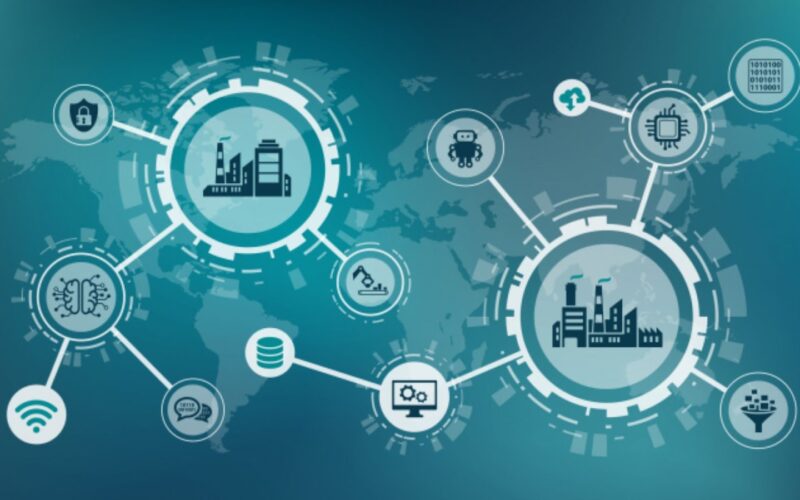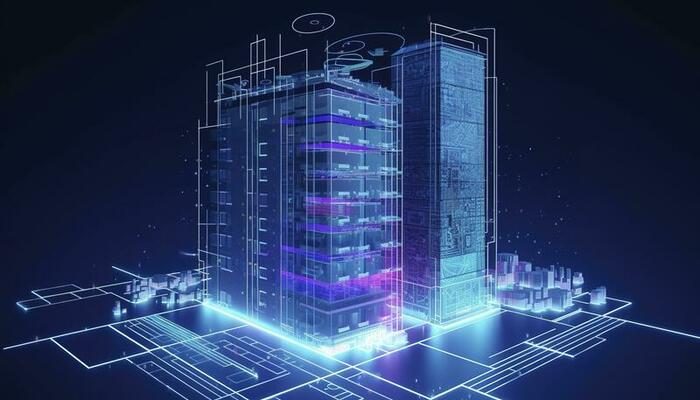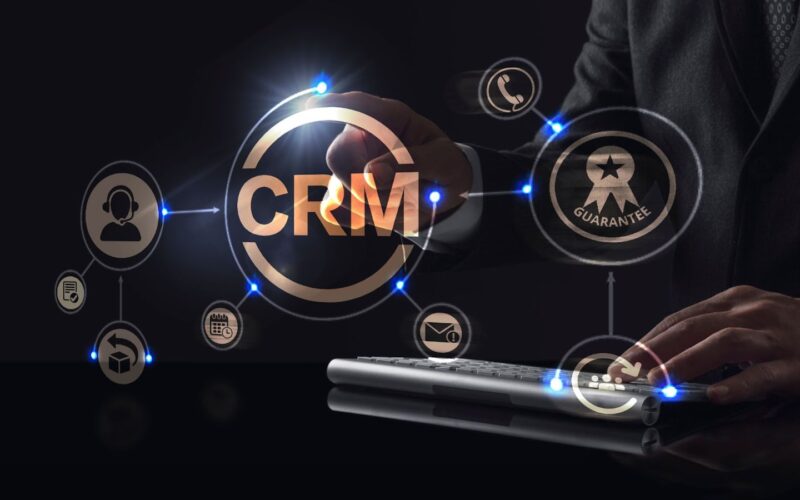When your business demands instant decisions, sending data across the internet to a distant cloud can introduce costly delays.
That’s where edge computing comes in. By processing data close to where it’s generated, whether in a factory, hospital, or retail store, edge systems reduce latency, cut bandwidth costs, and keep operations running even with unreliable connectivity.
In this article, you’ll explore edge computing use cases across industries, from healthcare and manufacturing to gaming and smart cities. You’ll also see practical examples of edge processing, common architecture patterns, and ROI considerations.
Key Takeaways
- Edge computing delivers faster, more reliable decisions by processing data locally, reducing latency, and ensuring resilience even with poor connectivity.
- Industry-specific use cases drive adoption — from predictive maintenance in manufacturing to real-time patient monitoring in healthcare and frictionless checkout in retail.
- Choosing the right architecture pattern is critical; device-level, gateway, or 5G MEC deployments each fit different performance, scalability, and compliance needs.
- Early ROI validation builds confidence; pilot projects with clear metrics demonstrate value before large-scale edge rollouts, reducing risk and accelerating adoption.
What Is Edge Computing?
Edge computing is the practice of processing data closer to where it is created, such as sensors, cameras, or machines, instead of sending everything to distant cloud servers.
By keeping computation near the source, edge systems deliver faster responses, reduce bandwidth costs, and improve reliability in environments where connectivity is inconsistent.
What You Need To Know Before You Choose an Edge Use Case
Before diving into edge computing use cases, it’s important to understand where edge makes sense and where it doesn’t.
Edge vs Cloud vs On-Premise
- Cloud computing centralizes workloads in large data centers, offering scalability but introducing latency.
- On-premise systems process data locally but are expensive and harder to scale.
- Edge computing combines the benefits of both by placing processing near data sources, reducing latency and bandwidth usage.
When Edge Makes Sense
- Applications needing instant responses, such as factory robots, hospital monitoring, or autonomous vehicles.
- Sites with limited or unreliable connectivity where continuous cloud access isn’t guaranteed.
- Workloads requiring data privacy or compliance by keeping sensitive data on-site.
When Edge Is Less Suitable
- Workloads that can tolerate latency or rely heavily on large-scale batch analytics may remain more cost-effective in the cloud.
That helps you decide where Edge fits in your strategy.
Also Read: What is Edge AI and How Does It Work: Benefits and Use Cases
Core Edge Capabilities You Rely On (in simple terms)
To understand edge computing use cases, you first need to see the unique capabilities that make it valuable across industries.
Key Capabilities
- Edge Processing: Running AI models or analytics on-site for instant decision-making.
- Bandwidth Reduction: Filtering or summarizing data before sending it to the cloud.
- Privacy and Compliance: Keeping sensitive data local to meet regulatory requirements.
- Resilience Offline: Continuing operations even when cloud connectivity is lost.
Enabling Technologies
- 5G and MEC enable ultra-low latency edge workloads for industries like telecom and automotive.
- Lightweight container platforms such as K3s allow distributed deployments across thousands of edge devices.
- Optimized inference runtimes like TensorRT, ONNX Runtime, or OpenVINO make AI models run efficiently at the edge.
These building blocks ensure edge systems are practical, scalable, and valuable in real-world scenarios.
Also Read: 10 Cutting-Edge Trends in Application Development Technologies
Use Case #1 – Manufacturing & Industrial IoT
Manufacturing was one of the earliest adopters of edge computing, as plants generate high-frequency data that requires real-time insights.
Use Cases
- Predictive Maintenance: Edge sensors analyze vibration and temperature to anticipate equipment failure before it occurs.
- Quality Inspection: Vision systems on production lines detect defects instantly, reducing scrap rates.
- Operational Dashboards: PLCs feed data into edge gateways to monitor efficiency in real time.
- Worker Safety: Cameras and sensors detect unsafe conditions and alert supervisors immediately.
Example of Edge Computing in Manufacturing
A production camera runs AI locally to identify defective parts. Only flagged images are sent to the cloud, saving bandwidth and ensuring immediate corrective action.
Edge computing in industrial settings reduces downtime, increases yield, and helps manufacturers maintain a competitive advantage in highly automated environments.
When every minute of downtime costs thousands, instant insights matter.
Book an AI Audit to evaluate how edge-enabled predictive maintenance can reduce unplanned outages in your operations.
Use Case #2 – Healthcare & Life Sciences
Healthcare environments demand instant responses and strict data privacy, making them a natural fit for edge computing.
Use Cases
- Patient Monitoring: Bedside devices analyze vitals in real time, alerting staff immediately to changes in condition.
- Medical Imaging: Edge servers process radiology scans locally for faster triage before full analysis is done in the cloud.
- Smart Equipment: Infusion pumps and surgical tools run edge analytics to improve accuracy and reduce human error.
- Asset Tracking: Hospitals monitor equipment location and usage through IoT devices connected to edge gateways.
Example of Edge Computing in Healthcare
Vital signs collected from ICU patients are processed at an on-site gateway. Clinicians receive instant alerts, while anonymized summaries sync securely to cloud-based records.
By reducing latency and ensuring compliance, edge computing strengthens both patient outcomes and operational efficiency in hospitals.
Data privacy and patient safety can’t wait for delayed cloud processing.
Schedule a free consultation to explore secure edge solutions designed for healthcare compliance and real-time patient monitoring.
Use Case #3 – Retail & Quick-Service
Retailers and quick-service restaurants face constant pressure to optimize operations and deliver better customer experiences. Edge computing enables both.
Use Cases
- Vision Analytics: Cameras identify shelf stock levels and track customer behavior without requiring massive cloud bandwidth.
- Cashierless Checkout: Edge-enabled recognition systems allow customers to walk out, with billing processed automatically.
- Queue Management: Edge processing monitors line lengths and prompts staff to open more counters during peak hours.
- Dynamic Pricing: Local systems adjust prices based on demand, reducing waste and improving sales.
Example of Edge Computing in Retail
In-store cameras run AI models locally to track shelf stock. Only structured metadata is uploaded, lowering bandwidth costs and enabling real-time restocking alerts.
Edge computing helps retailers increase efficiency, improve service speed, and deliver more engaging in-store experiences.
Enhancing in-store experiences requires real-time insights, not delayed cloud processing.
Check our portfolio to see how Codewave has delivered customer-centric digital solutions for enterprises worldwide.
Use Case #4 – Energy & Utilities
Energy providers handle massive data streams from distributed assets such as grids, wind farms, and substations. Edge computing makes real-time decision-making possible.
Use Cases
- Smart Grid Balancing: Edge devices analyze local demand and generation to optimize power flow.
- Substation Monitoring: Edge gateways detect anomalies like voltage spikes and trigger corrective measures immediately.
- Renewable Performance: Wind turbines and solar panels process sensor data locally to track efficiency and detect issues.
- Safety Alerts: Edge systems monitor hazardous conditions, protecting infrastructure and personnel.
Example of Edge Computing in Utilities
A micro-phasor measurement unit at a distribution feeder performs local edge processing to detect instability. Corrective commands are executed instantly, avoiding service disruptions.
By enabling fast, localized decisions, edge computing improves reliability, supports renewable integration, and reduces the risk of large-scale outages.
Also Read: Benefits and Use Cases of IoT in Banking
Use Case #5 – Transportation & Logistics
Fleet operators and logistics providers rely on timely insights to improve safety, reduce costs, and streamline delivery. Edge computing helps meet those demands.
Use Cases
- Fleet Telematics: On-board devices process location and engine data in real time.
- Driver Safety Monitoring: Cameras running edge AI detect distraction or fatigue and issue instant alerts.
- Cargo Tracking: Edge sensors monitor temperature, humidity, and vibration for sensitive goods in transit.
- Route Optimization: Vehicles calculate optimal paths at the edge, even without consistent connectivity.
Example of Edge Computing in Logistics
A dashcam with edge AI detects road hazards and uploads only critical events to the cloud, reducing bandwidth use and improving driver safety.
Edge computing ensures faster decisions on the road, improves cargo integrity, and lowers operational risks for logistics companies.
Also Read: Future of AI in Transportation: Efficiency and Safety
Use Case #6 – Smart Cities & Public Safety
City infrastructures generate massive volumes of data from traffic systems, surveillance networks, and environmental sensors. Edge computing enables cities to respond quickly and efficiently.
Use Cases
- Traffic Management: Edge controllers adjust signal timing based on real-time vehicle flow.
- Public Safety: Surveillance cameras detect unusual activities locally, reducing response time for emergencies.
- Smart Parking: Edge-enabled sensors track space availability and update drivers instantly.
- Environmental Monitoring: Local processing of air quality and noise data supports urban health initiatives.
Example of Edge Computing in Smart Cities
At intersections, edge devices process video streams to identify congestion. Traffic lights adjust cycles dynamically without relying on remote cloud servers.
By decentralizing processing, edge computing helps cities improve safety, reduce congestion, and enhance sustainability with faster, data-driven responses.
Smarter cities depend on faster decisions at the edge — from traffic lights to emergency alerts.
Book a free consultation to discuss edge-enabled strategies for improving safety, mobility, and urban efficiency.
Use Case #7 – Media, Gaming & Content Delivery
Media streaming and interactive gaming require ultra-low latency to maintain user experience. Edge computing makes these workloads practical and responsive.
Use Cases
- Cloud Gaming Acceleration: Processing closer to players reduces lag and improves gameplay.
- AR/VR Filters: Edge processing enables immersive effects on devices with limited computing power.
- Live Event Streaming: Stadiums use edge servers for localized video delivery, minimizing bandwidth bottlenecks.
- Localized Content Delivery: Ads and recommendations are inserted at edge nodes based on audience data.
Example of Edge Computing in Gaming
A gaming provider deploys edge servers near players, cutting response times drastically. Gameplay feels seamless even with graphically demanding titles.
Edge computing ensures smooth experiences in media and gaming, where milliseconds make the difference between success and frustration.
Also Read: Understanding Next Stage of Web3 Gaming
Use Case #8 – Telecom & 5G MEC
Telecom operators are central to edge computing adoption, as 5G networks provide the low-latency infrastructure required for advanced use cases.
Use Cases
- Virtualized RAN (vRAN): Edge nodes process radio functions for faster and more efficient connectivity.
- Private 5G Analytics: Enterprises run dedicated edge workloads within their networks for security and reliability.
- Network Slicing Assurance: Edge systems monitor performance and enforce service-level agreements dynamically.
- On-Prem Edge Hosting: Multi-access edge computing (MEC) allows localized AI workloads near factories, hospitals, or stadiums.
Example of Edge Computing in Telecom
A telecom operator deploys edge servers in stadiums to support AR-based fan experiences, reducing latency while freeing up core network bandwidth.
By combining 5G and edge computing, telecoms deliver new services, reduce congestion, and create differentiated business opportunities.
Also Read: 24/7 Managed NOC and Network Operations Center Services Monitoring
Use Case #9 – Oil & Gas, Mining, and Remote Operations
Industries operating in remote or hazardous environments require resilient systems that operate reliably without continuous cloud access. Edge computing is crucial here.
Use Cases
- Pipeline Leak Detection: Sensors process vibration and pressure changes locally for instant alerts.
- Rig Safety: Cameras and edge AI detect unsafe conditions in real time.
- Autonomous Mining Vehicles: Haul trucks use edge inference for navigation in connectivity-limited sites.
- Worker Compliance: Edge-enabled vision systems verify protective equipment usage on-site.
Example of Edge Computing in Remote Operations
A mining truck equipped with onboard AI processes obstacle detection locally. Decisions are immediate, ensuring safety despite limited or delayed connectivity.
Edge computing enables safer, more efficient operations in environments where cloud reliance is impractical or unsafe.
Use Case #10 – Agriculture & Environmental Monitoring
Farms and environmental projects often operate in remote locations with limited connectivity, making edge computing highly valuable for real-time decision-making.
Use Cases
- Precision Agriculture: Edge-enabled sensors monitor soil moisture, adjusting irrigation instantly.
- Pest Detection: Drones run models onboard to identify crop diseases or infestations.
- Weather-Aware Farming: Edge devices control spraying schedules based on local microclimate conditions.
- Environmental Monitoring: Edge sensors track air quality, water levels, or forest conditions for conservation.
Example of Edge Computing in Agriculture
A drone flying over fields processes images locally to detect pest outbreaks. Only summary data is uploaded, saving bandwidth and guiding immediate farmer action.
Edge computing helps agriculture improve yields, reduce waste, and adopt sustainable practices even in bandwidth-constrained environments.
Also Read: How AI and Farmers are Shaping the Future of Agriculture
Security & Compliance at the Edge
As data moves to the edge, protecting systems and ensuring compliance with regulations becomes a critical responsibility.
Security Priorities
- On-Device Privacy: Sensitive data is processed locally, minimizing exposure.
- Trusted Hardware: Secure boot and hardware-based encryption protect against tampering.
- Zero-Trust Networks: Devices authenticate continuously, limiting breach risks.
- Model Provenance: Tracking how AI models evolve ensures accountability.
Compliance Considerations
- Healthcare: HIPAA requires patient data to remain protected, often best achieved with edge processing.
- Finance: PCI-DSS compliance benefits from keeping sensitive transactions local.
- Global Regulations: GDPR emphasizes data minimization, which edge inherently supports.
Strong governance and transparent auditing ensure edge systems remain secure and compliant, even when distributed across thousands of devices.
Also Read: Understanding the Importance of a Digital Security Audit
Architecture Patterns You Can Reuse
Edge deployments follow different patterns depending on application needs, scalability, and network conditions. Understanding these helps you select the right approach.
Common Patterns
- Device-Only Inference: Processing happens entirely on sensors or cameras, best for single-purpose tasks like defect detection or face unlock.
- Gateway Aggregation: Edge gateways collect data from multiple devices, perform pre-processing, and sync summaries with cloud platforms.
- Local Edge Data Centers: Mini data centers on-site run workloads too large for devices, often used in factories or hospitals.
- 5G MEC Nodes: Telecoms host workloads at network edges, ideal for latency-sensitive services like AR in stadiums or smart traffic.
Supporting Tools
- Lightweight container platforms like K3s manage distributed deployments.
- ONNX Runtime, TensorRT, and OpenVINO optimize AI inference.
- OTA (Over-the-Air) updates and blue/green rollouts maintain models securely.
Choosing the right edge architecture determines scalability and security.
Talk to Codewave about AI/ML development at the edge, from device-only inference to 5G MEC deployments.
Build vs Buy: Evaluating Edge Platforms
Before implementing edge computing, you must decide whether to build a custom solution or adopt an existing platform.
When to Build
- You need full customization for unique hardware, workloads, or compliance requirements.
- Your team has strong in-house expertise in container orchestration and security.
When to Buy
- You want faster time-to-market with proven SDKs, management consoles, and APIs.
- Your organization prefers managed services for updates, monitoring, and patching.
Evaluation Checklist
- Manageability: Can the platform handle thousands of distributed nodes?
- Security: Does it support hardware trust and zero-trust models?
- Cost: What is the long-term cost to maintain versus licensing fees?
- Hardware Diversity: Can it support GPUs, CPUs, and edge ASICs?
Choosing wisely ensures your edge deployment delivers value without introducing unmanageable complexity.
ROI Checklist: Proving Value Early
Edge computing promises value, but proving ROI early is critical to gain stakeholder support and justify scaling deployments.
Steps to Demonstrate ROI
- Quantify Bandwidth Savings: Measure cloud egress costs avoided by local data filtering and aggregation.
- Track Latency Improvements: Relate faster decision-making to tangible business outcomes such as fewer accidents, faster service, or higher productivity.
- Calculate Downtime Reduction: Highlight avoided costs when predictive maintenance or local failover prevents outages.
- Start Small: Pilot one workload in one location, measure one clear metric, and set a fixed timeline for evaluation.
Example
A manufacturer tests edge-based quality inspection for one production line. Within weeks, defect rates drop, validating the business case for wider deployment.
Clear pilots with measurable outcomes help you demonstrate early value and build confidence for scaling edge initiatives.
Unlock the Full Potential of Edge Computing for Your Business
At Codewave, we don’t just help you choose the right edge computing use cases—we make them work for your business, driving real, measurable outcomes.
Here’s how we ensure your edge computing solutions deliver:
- Edge Computing at Scale: We help you deploy edge solutions that process data locally, enabling faster, real-time decision-making, without the delays of centralized cloud systems.
- Data Strategy Consulting: Our team structures efficient, secure data pipelines that ensure compliance while maximizing performance and scalability, making it easier for you to grow.
- Rapid Validation: With our AI Audit, AI Prototype Development, and AI Strategy Consulting, we test ideas and refine them quickly, so you can make informed decisions before scaling.
With 400+ successful digital transformation projects, we know what works. We’re committed to helping you implement edge computing solutions that improve speed, reduce costs, and enhance your operations.
Ready to explore how edge computing can drive real-time outcomes for your business? Book a free consultation to discuss edge-enabled opportunities for your business.
Frequently Asked Questions (FAQs)
1. What is a real-world example of edge computing?
A factory camera detecting defective products in real time is a practical example. Processing happens locally, and only flagged data is sent to the cloud.
2. How is edge computing different from fog computing?
Fog computing extends cloud resources closer to devices, often at gateways, while edge computing processes data directly at or near the source device.
3. Can edge computing work without internet connectivity?
Yes. Edge systems can process data locally and operate independently. They sync summaries or results with the cloud once connectivity is restored.
4. What industries benefit most from edge computing?
Industries with real-time decision needs, such as healthcare, manufacturing, retail, energy, and transportation gain the most from edge deployments.
5. How does edge computing improve data privacy?
Sensitive data can be analyzed locally without leaving the device or site, reducing exposure and supporting compliance with regulations like GDPR or HIPAA.
6. What is edge AI, and how does it relate to edge computing?
Edge AI refers to running machine learning models locally on edge devices, combining AI capabilities with the speed and efficiency of edge processing.
Codewave is a UX first design thinking & digital transformation services company, designing & engineering innovative mobile apps, cloud, & edge solutions.







